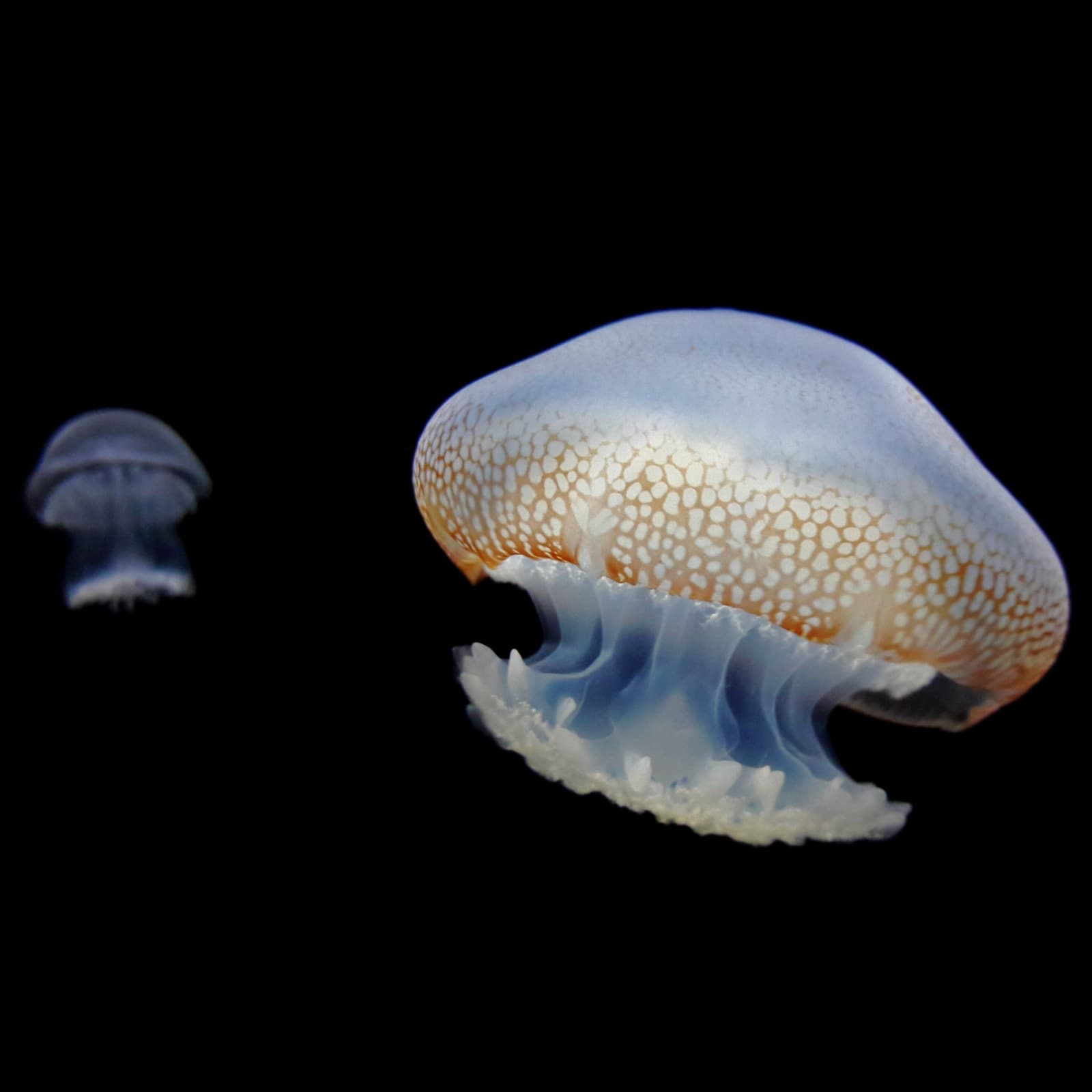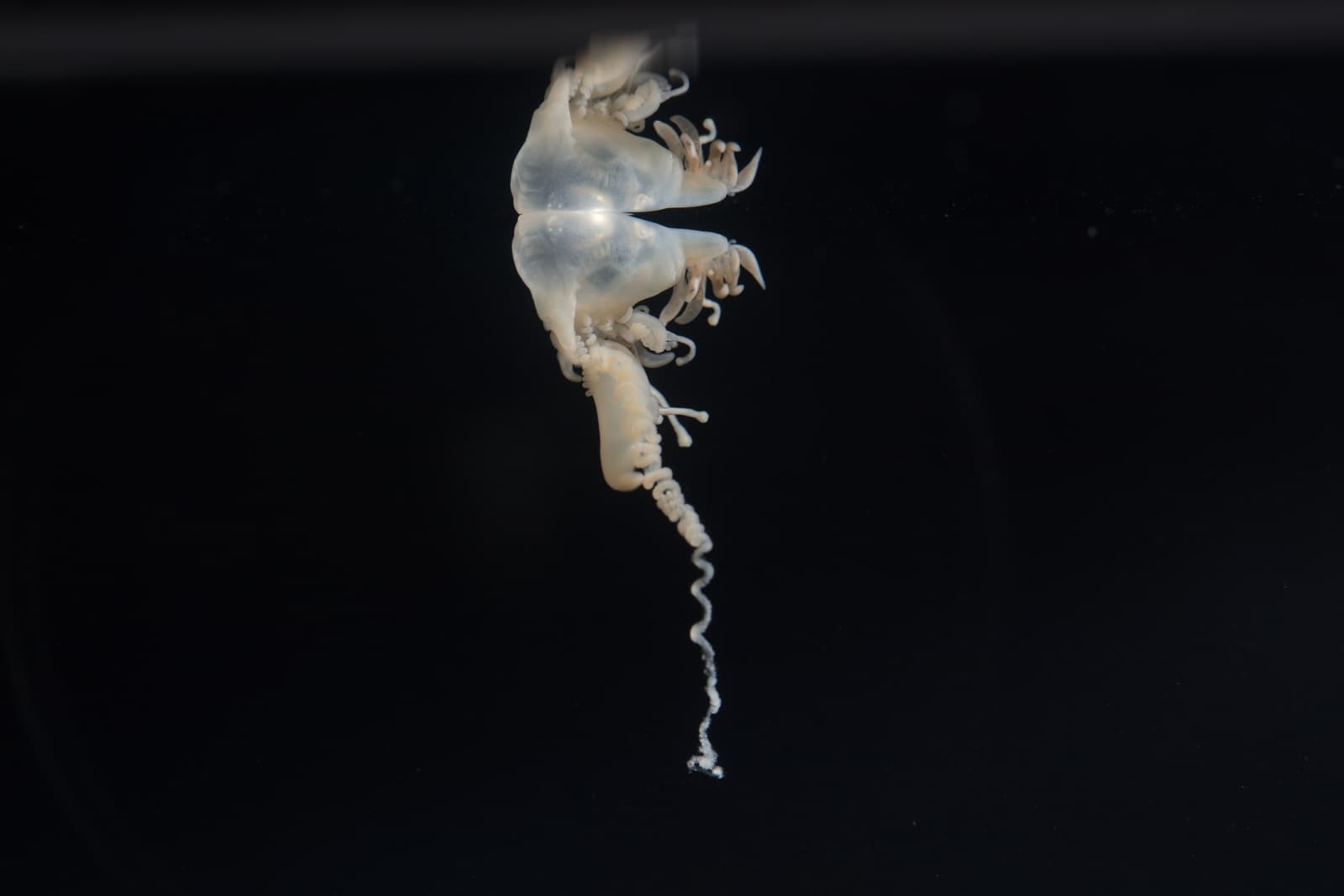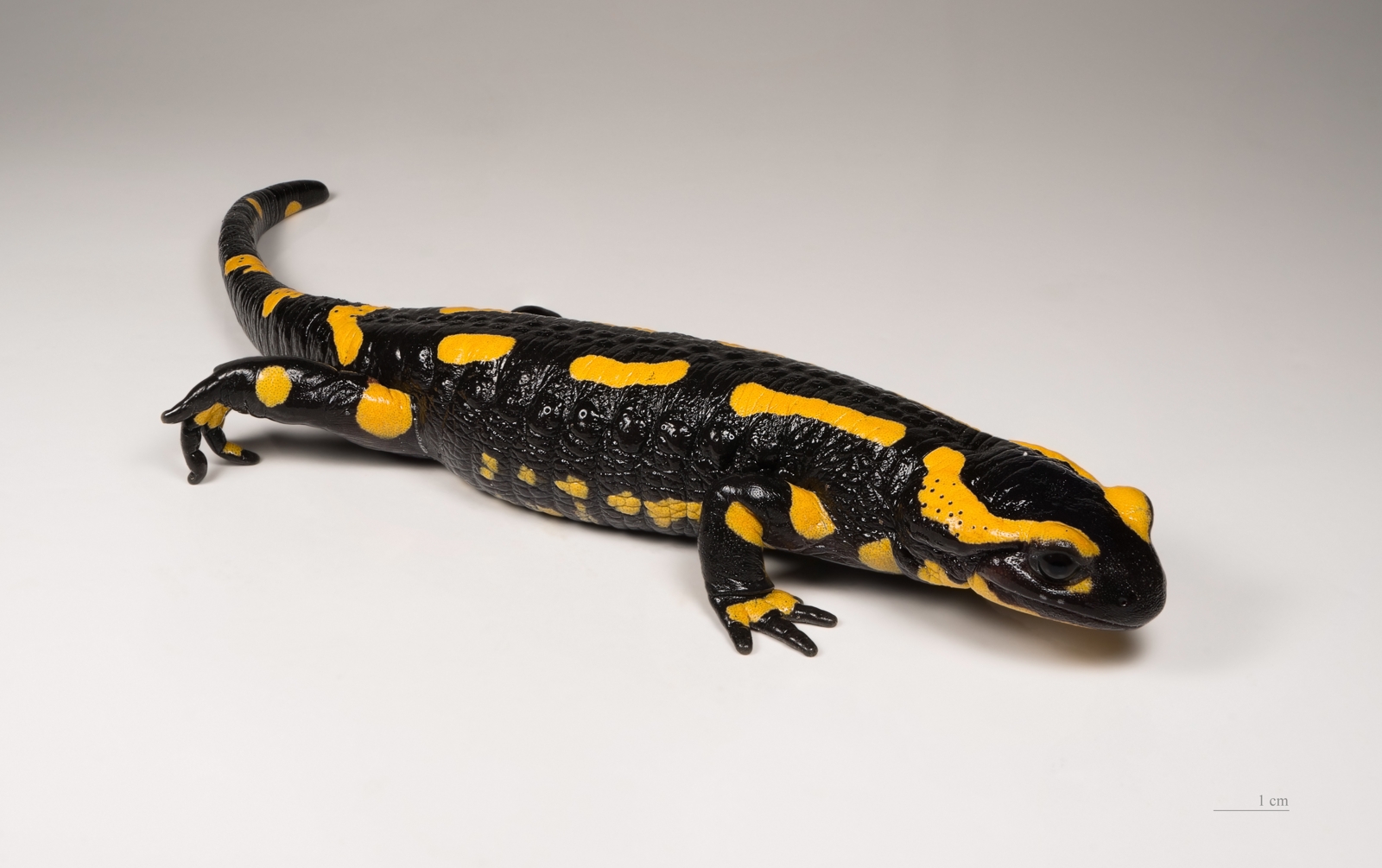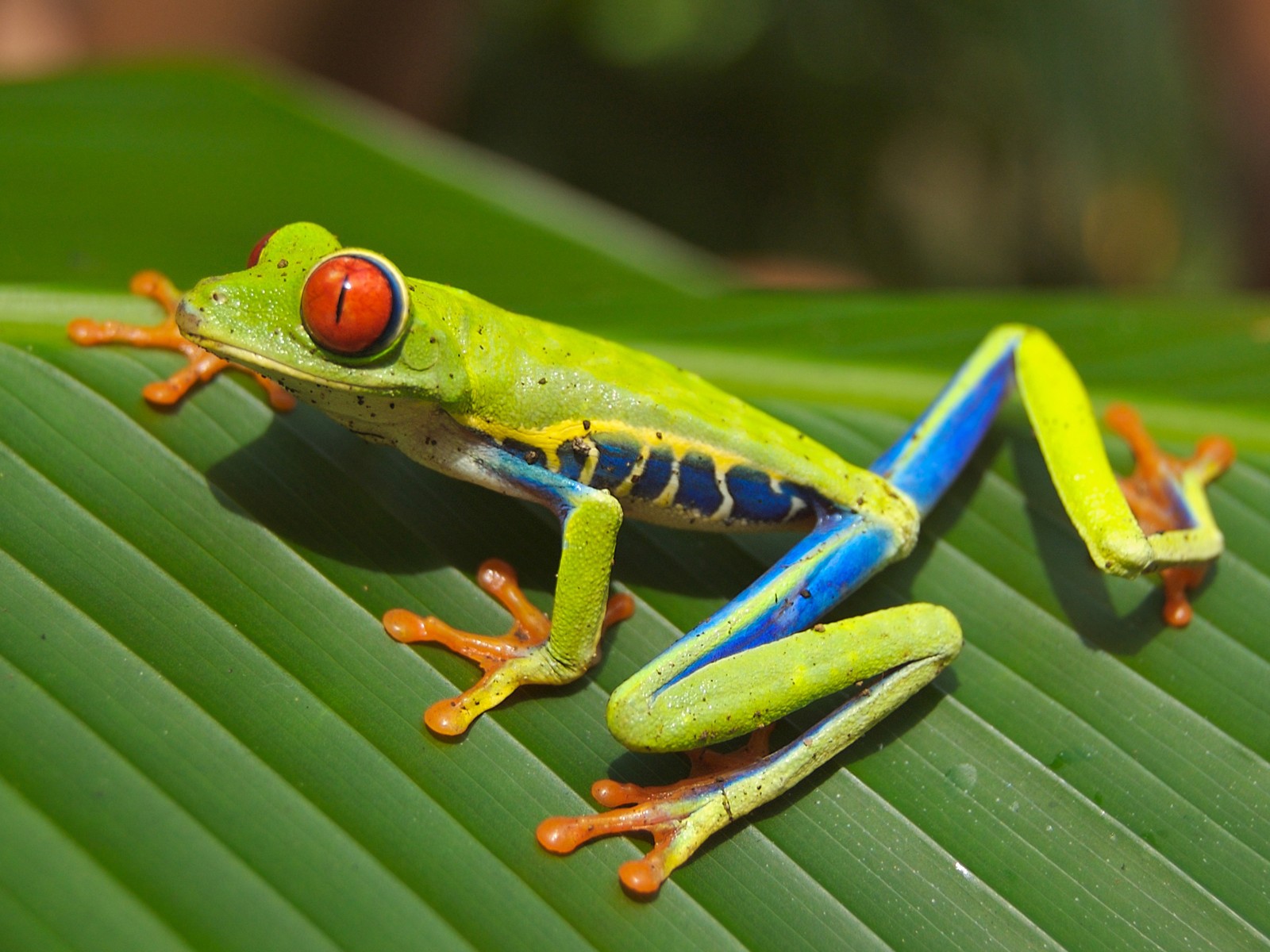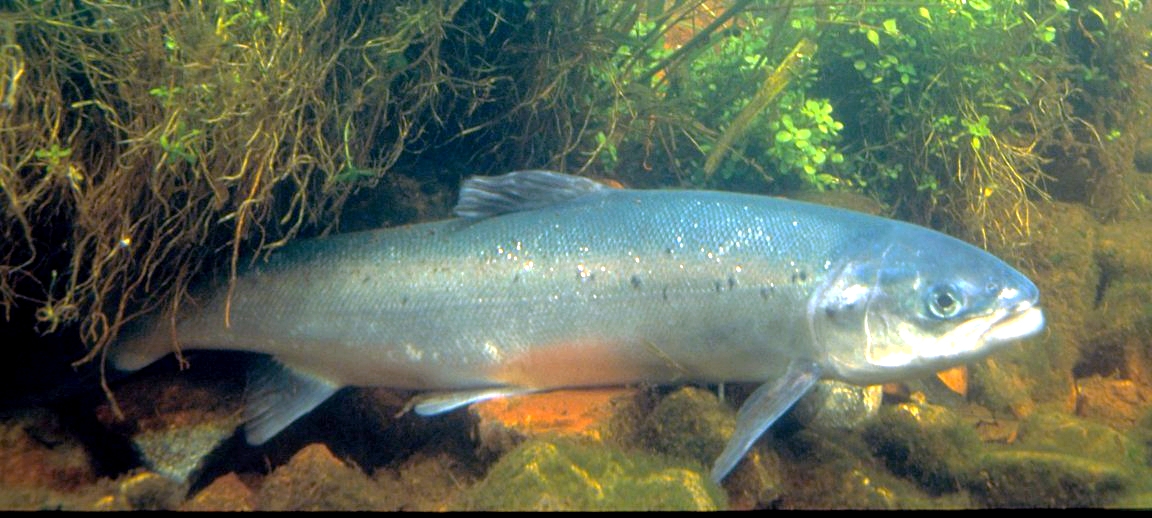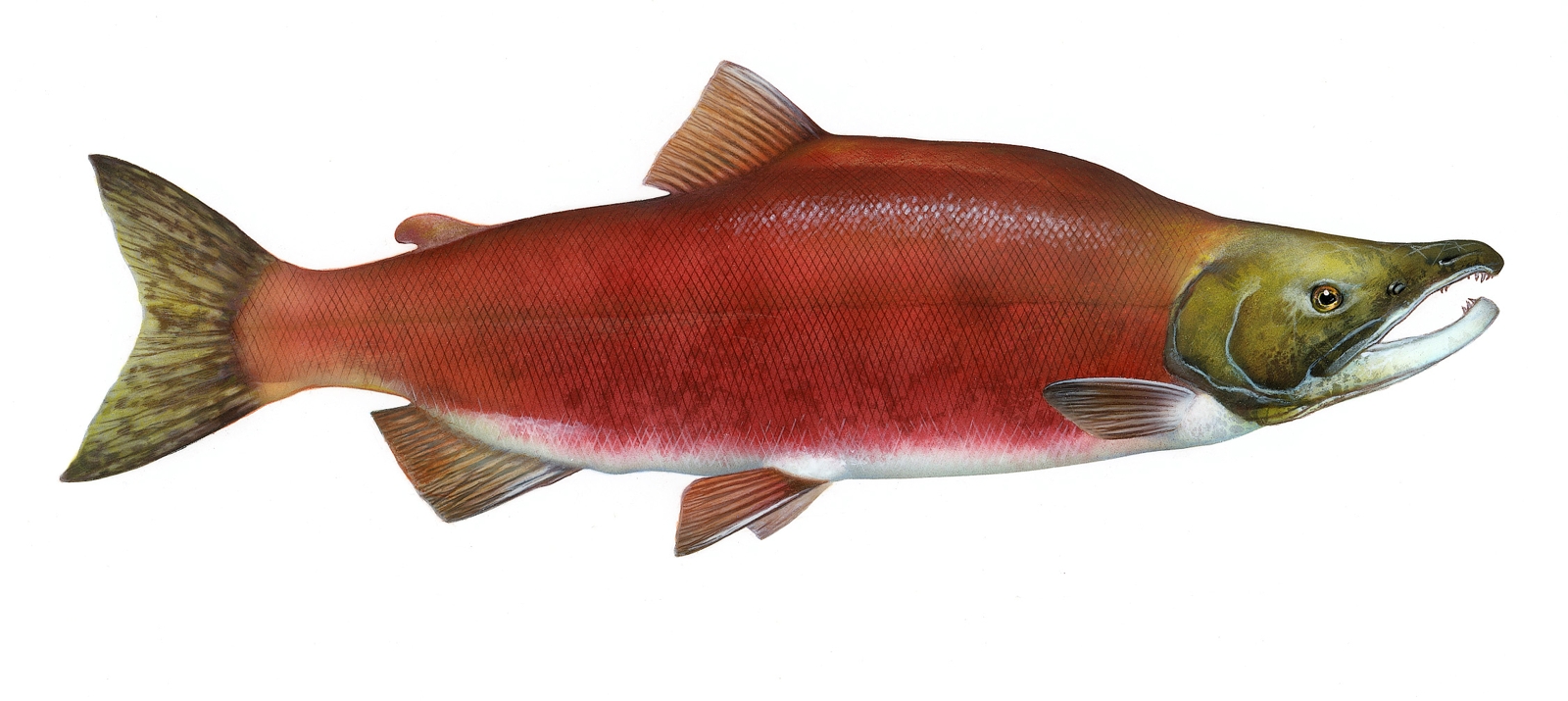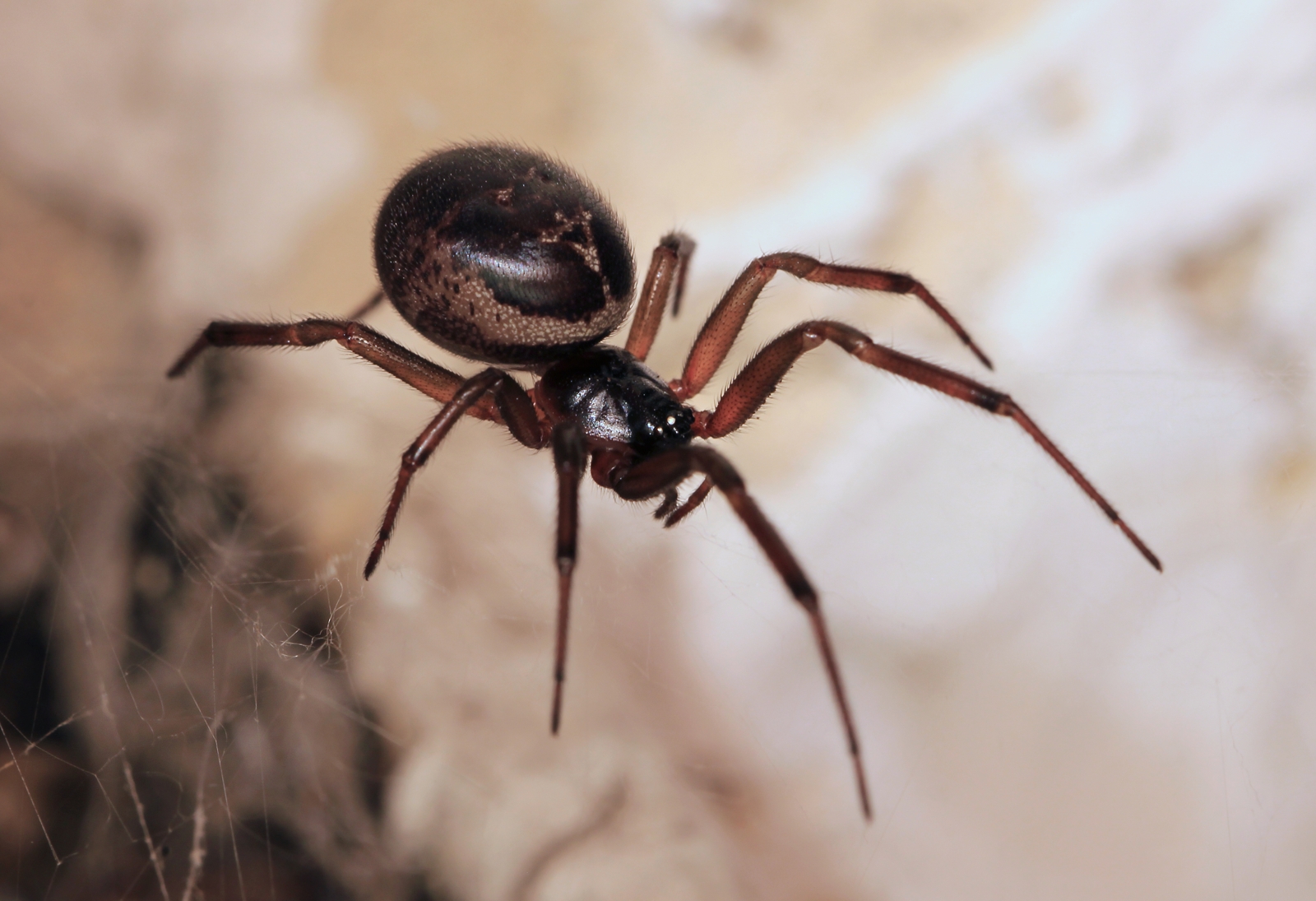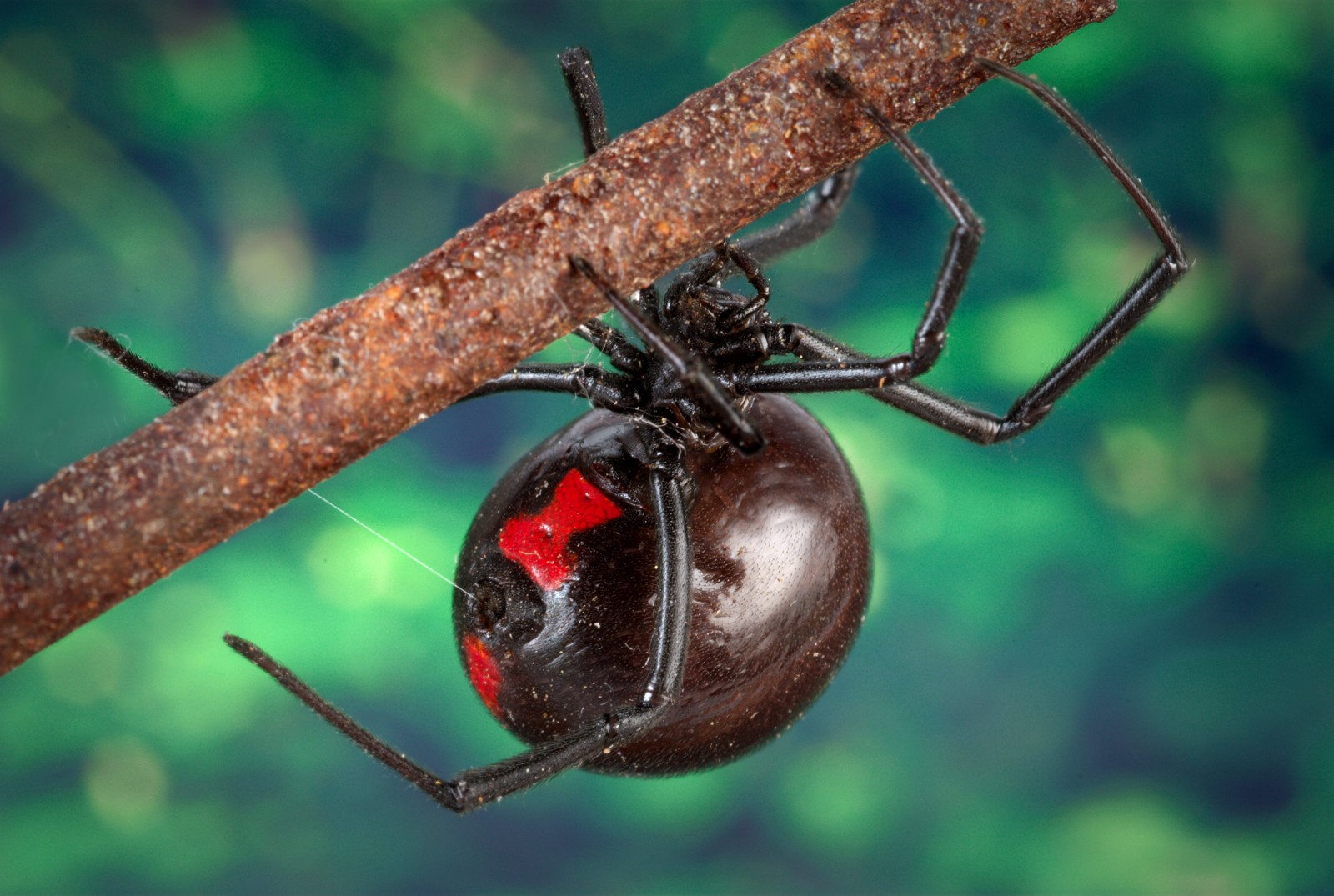Jellyfish vs Sea Anemone: A Complete Comparison
While jellyfish and sea anemones share a common ancestral lineage as cnidarians, these fascinating marine creatures exhibit striking differences in their lifestyle and anatomy. Jellyfish freely swim through ocean waters using pulsating movements, while sea anemones remain anchored to the seafloor, rocks, or coral reefs. The largest jellyfish can reach bell diameters of up to 8 feet (2.4 meters), whereas the largest sea anemones typically max out at 6 inches (15 centimeters) in diameter.
Both creatures employ specialized stinging cells called nematocysts to capture prey, but their hunting strategies couldn’t be more different. Jellyfish drift and actively pursue their meals, while sea anemones wait patiently for food to come within reach of their tentacles. This fundamental difference in feeding behavior reflects their distinct evolutionary adaptations to marine life.
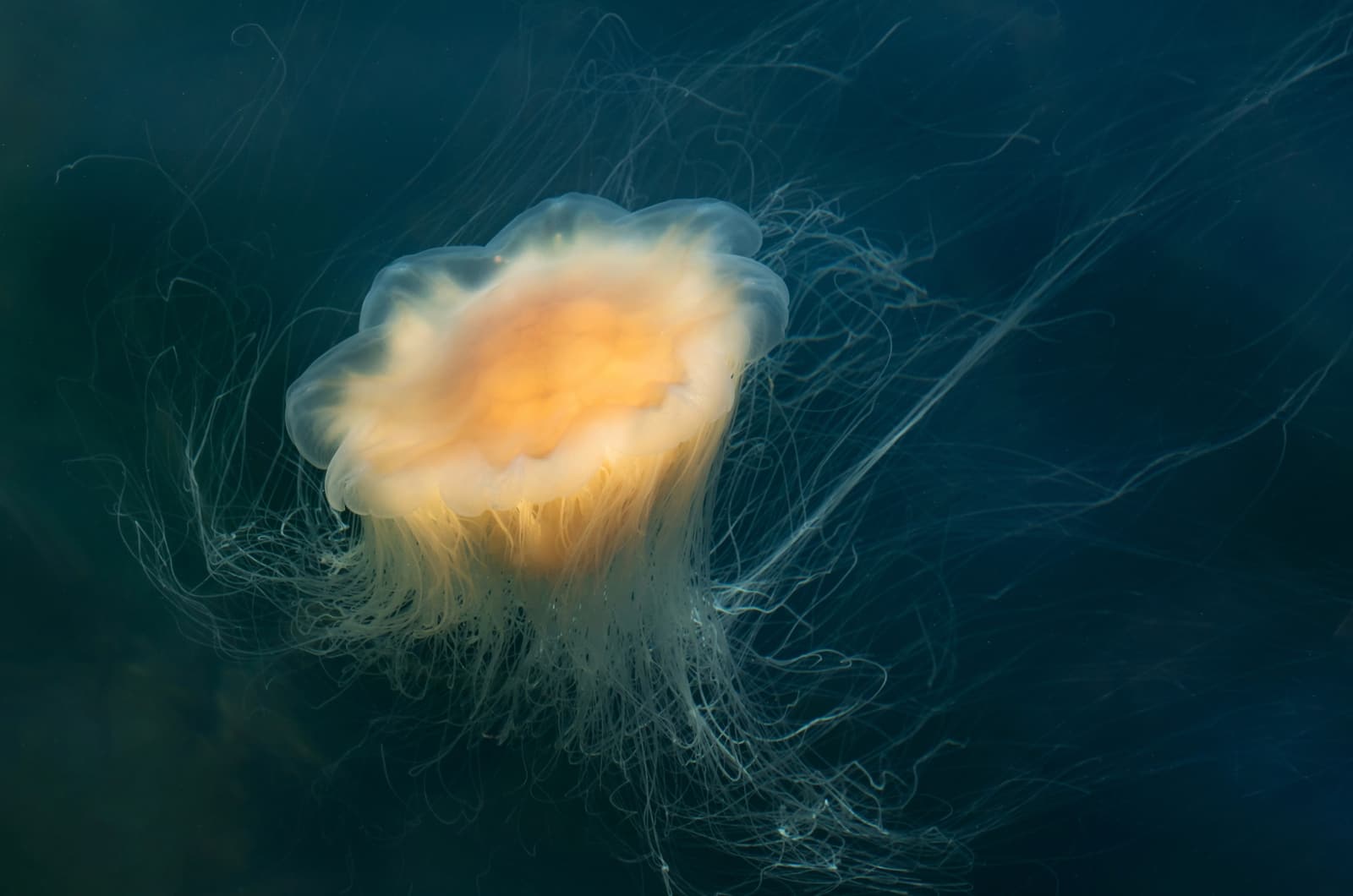
© W.carter / CC0
A magnificent Lion’s Mane jellyfish displays its characteristic bioluminescence while swimming through deep waters. These remarkable creatures can trail tentacles up to 120 feet (37 meters) in length, making them one of the longest animals on Earth.
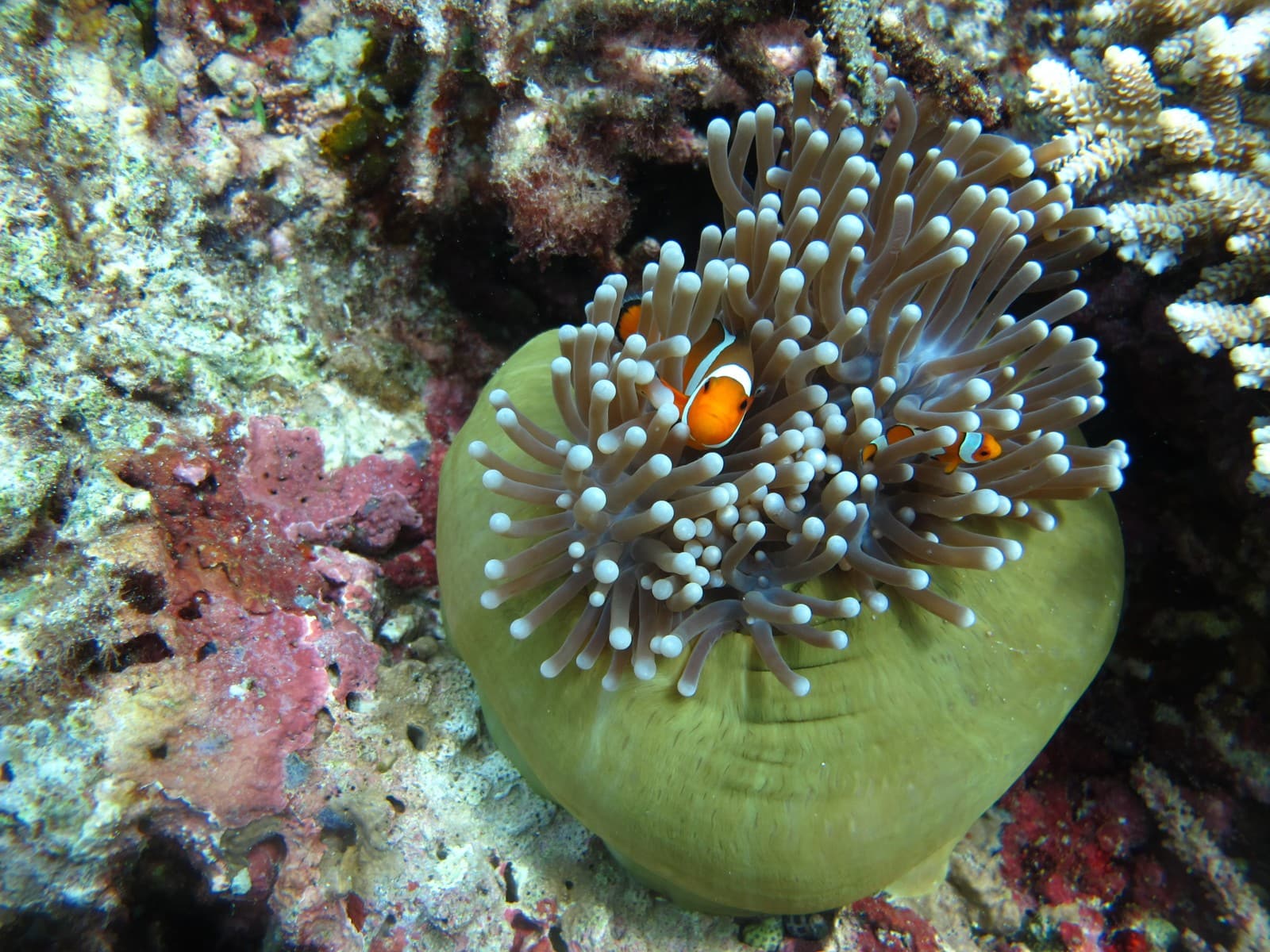
© Triniti14045 / CC BY-SA 4.0
A sea anemone demonstrates the remarkable symbiotic relationships these creatures form with other marine life. Unlike jellyfish, anemones often serve as hosts to various species, providing shelter in exchange for benefits like protection and food scraps.
Key Differences Between Jellyfish and Sea Anemones
| Feature | Jellyfish | Sea Anemone |
|---|---|---|
| Mobility | Free-swimming | Sessile (attached to substrate) |
| Size | Up to 8 ft (2.4 m) bell diameter | Up to 6 in (15 cm) diameter |
| Habitat | Open ocean, all depths | Coastal waters, coral reefs |
| Lifespan | 3-6 months typical | Up to 50 years |
| Body Structure | Bell-shaped with trailing tentacles | Column-shaped with crown of tentacles |
| Hunting Style | Active pursuit and drift feeding | Passive ambush predation |
Habitat and Distribution
Jellyfish and sea anemones have evolved to occupy distinctly different marine niches. Jellyfish populate all ocean depths, from surface waters to the darkest trenches, and can be found in every ocean on Earth. Sea anemones, however, primarily inhabit shallow coastal waters and coral reefs, where they can firmly attach to hard surfaces and access abundant prey.
Hunting and Feeding Strategies
While both creatures use nematocysts for hunting, their approaches differ significantly. Jellyfish employ a combination of drift-feeding and active pursuit, using their pulsating bells to navigate through water columns while trailing their stinging tentacles like deadly fishing nets. Sea anemones, anchored in place, rely on current-borne prey and quick-strike tentacle reactions to capture passing organisms.
Survival Adaptations
Sea anemones have developed remarkable defensive mechanisms, including the ability to retract their tentacles and entire body into their column when threatened. Many species also form symbiotic relationships with other marine creatures, most famously with clownfish. Jellyfish, lacking such partnerships, rely on transparency, bioluminescence, and their potent stinging abilities for protection.
Reproduction and Life Cycles
The reproductive strategies of these cnidarians showcase their evolutionary divergence. Jellyfish undergo a complex life cycle involving both sexual and asexual stages, with free-swimming medusa representing their adult form. Sea anemones primarily reproduce through asexual division, though they can also spawn sexually, producing larvae that settle and develop into new anemones.
Who Would Win in a Direct Encounter?
While this question frequently surfaces in marine biology discussions, the reality is that jellyfish and sea anemones rarely interact in nature due to their different habitats and lifestyles. However, if a jellyfish were to encounter a sea anemone, neither would likely “win” as both possess similar nematocyst-based defensive capabilities, effectively neutralizing each other’s primary weapons.
Conservation Status and Environmental Threats
Both species face increasing challenges from ocean acidification, pollution, and warming waters. Jellyfish populations have shown remarkable resilience, with some species actually thriving in degraded marine environments. Sea anemones, however, particularly those associated with coral reefs, face greater threats due to their specific habitat requirements and sensitivity to environmental changes.
Through understanding these fascinating creatures’ differences and similarities, we gain deeper insight into the incredible diversity of marine life and the various evolutionary strategies that have emerged in our oceans over millions of years.
